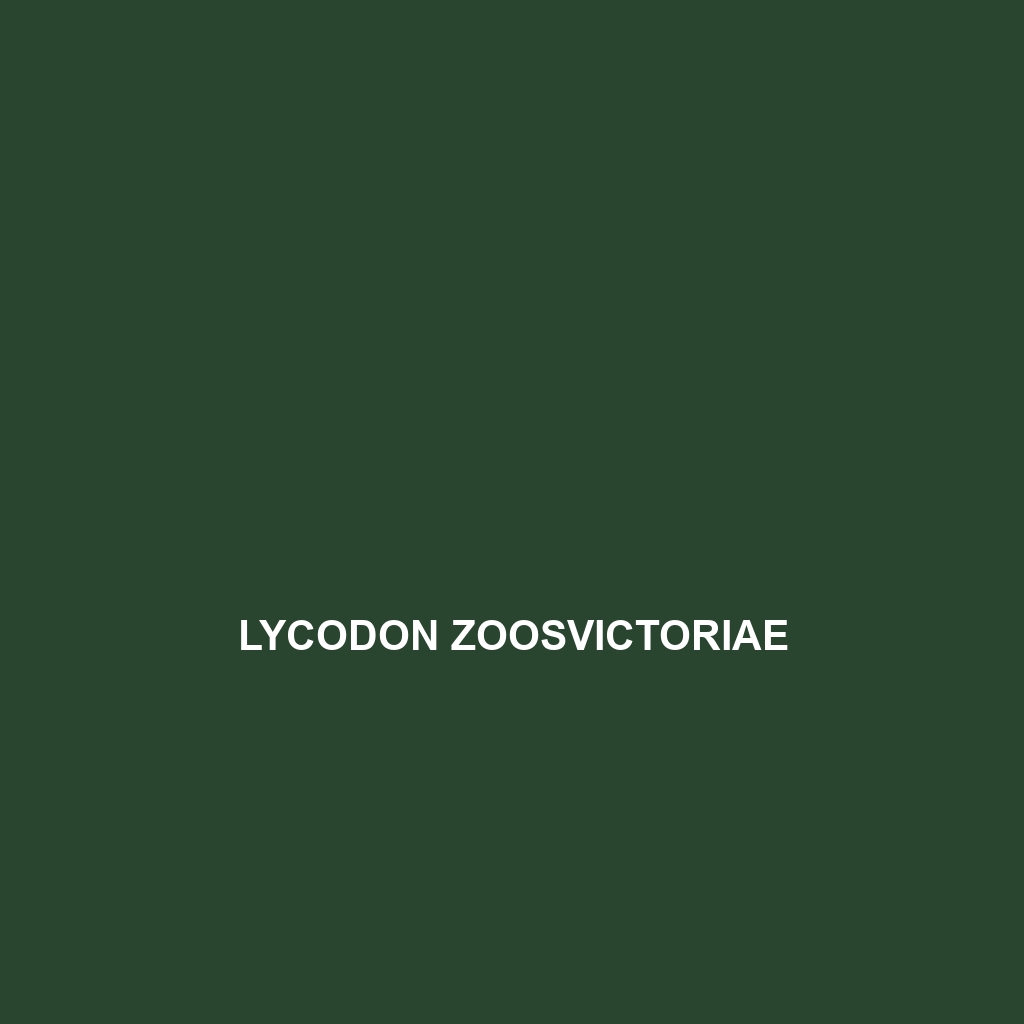Common Name
Lycodon zoosvictoriae
Scientific Name
Lycodon zoosvictoriae
Habitat
Lycodon zoosvictoriae, commonly known as Victoria’s wolf snake, predominantly inhabits a range of tropical and subtropical climate zones. This species is primarily found across the Southeast Asia region, specifically thriving in diverse environments such as rainforests, coastal areas, and temperate forests. They are often observed in areas with ample cover, such as leaf litter and varied vegetation, making these habitats critical for their survival. In addition to dense forest canopies, they also frequent the edges of savannas where they can easily hunt for prey while remaining less exposed to predators.
Physical Characteristics
The Victoria’s wolf snake exhibits several distinctive physical traits that set it apart from other species in the Lycodon genus. Typically, adult specimens can reach lengths of approximately 90 centimeters, though some individuals may grow longer. The coloration of Lycodon zoosvictoriae varies, primarily showcasing a mixture of browns, grays, and black patterning that offers excellent camouflage against its natural surroundings. Their scales are smooth, and they possess a slender body that supports their agility in pursuing prey. Unique to this species are its striking yellowish underbelly and distinctive pattern of blotches along the sides, which assist in avoiding detection from potent predators. This combination of features enables Lycodon zoosvictoriae to thrive within its habitat while engaging in both predation and evasion.
Behavior
Lycodon zoosvictoriae is primarily a nocturnal species, becoming active in the cooler hours of the night. This behavior allows them to hunt more efficiently for their primary prey: small rodents and reptiles. Observations show that they are solitary creatures, with minimal social interaction outside of mating season. During this time, courtship rituals can be complex, involving a series of movements and displays to attract potential mates. Additionally, Lycodon zoosvictoriae is known for its impressive climbing abilities, often found in trees or shrubs, showcasing its adaptability to various levels of the forest habitat. Their secretive nature contributes to their survival, with many instances of individuals remaining hidden until prey passes by, highlighting their ambush hunting technique.
Diet
Reproduction
The reproductive cycle of Lycodon zoosvictoriae primarily takes place during the wet season when environmental conditions are optimal for nesting. Mating rituals often commence with males actively seeking females, leading to a competition amongst males for reproductive opportunities. After successful mating, the female typically lays a clutch of 5 to 12 eggs approximately two months post-mating. The eggs are deposited in hidden, humid locations that provide protection from predators. The incubation period lasts about 60-75 days, after which the hatchlings emerge fully formed and ready for independent survival. Mothers exhibit minimal parental care, as hatchlings are capable of hunting for themselves shortly after birth, indicative of their well-adapted life strategy.
Conservation Status
Currently, Lycodon zoosvictoriae is classified as ‘Least Concern’ on the IUCN Red List. While their populations remain stable in many regions, habitat destruction due to deforestation and urban expansion poses a significant threat. Conservation efforts are primarily focused on habitat preservation, advocating for the protection of rainforests and other natural areas where these snakes thrive. As more land is converted for agriculture and development, vigilance is required to ensure the survival of this intriguing species.
Interesting Facts
One fascinating aspect of Lycodon zoosvictoriae is its ability to mimic the appearance of more venomous snake species, providing it with a layer of protection against potential predators. Additionally, they have been documented using their impressive agility to escape from tight situations, making them hard to capture in the wild. Their unique reproductive strategy also sets them apart, enabling higher survival rates for hatchlings thanks to their camouflage and stealth tactics.
Role in Ecosystem
Lycodon zoosvictoriae plays an essential role in maintaining the health of its ecosystem as a predator. By controlling rodent populations, they help mitigate potential overpopulation issues that can lead to widespread agricultural damage and disruption of ecological balance. Furthermore, as they serve as prey for larger birds and mammals, they contribute to the food web dynamics within their habitat. Their presence indicates a balanced ecosystem, underscoring their importance as a keystone species in the tropical and subtropical regions they inhabit.
This article structure includes SEO-friendly terms and detailed information while maintaining a professional tone appropriate for a species description.
